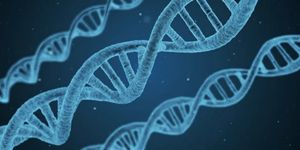Bacteria Can Read Genes Forwards or Backwards
One of the most basic processes in life is the creation of proteins from mRNA molecules, which are transcribed from DNA. Sequences called promoters alert a cell's machinery to the location in DNA where a gene's sequence begins. It was once thought that promoters would only allow the machinery to read the DNA in one direction. But in recent years, scientists have been upending that notion; yeast cells seem to be able to generate multiple RNA transcripts by transcribing overlapping stretches of DNA in various ways. The idea of a promoter only triggering the transcription of one sequence is changing.
Now researchers have found that DNA can be transcribed in two directions in the bacterium E. coli. The findings, which have been reported in Nature Microbiology, revealed the existence of symmetrical promotors in the E. coli genome, and other bacterial and archaeal species, which enable the organisms' DNA to be read in both directions.
"Most of the studies on gene signaling overlook the symmetry, but we think this is incredibly significant and represents a whole new level of regulating genes that has not yet been investigated," said the lead study author, Professor David Grainger of the University of Birmingham.
The researchers believe this type of bidirectional transcription will be found in other organisms, including humans, eventually. They will be looking for symmetrical bidirectional transcription in yeast cells next. The scientists suggested that while we don't know the purpose of it yet, bidirectionality may help the cell avoid molecular collisions. It might also be efficient.
"Understanding how genes are read is fundamental to many branches of biotechnology. Lots of medicines, for example, are dependent on being able to control how genes are read, so it's important to fully understand how these signals work, and how we can use that knowledge to improve healthcare," added Grainger.
A cell's identity and functions are based on the genes it expresses; it's crucial to learn what transcripts cells make and use.
Sources: AAAS/Eurekalert! Via University of Birmingham, Nature Microbiology









